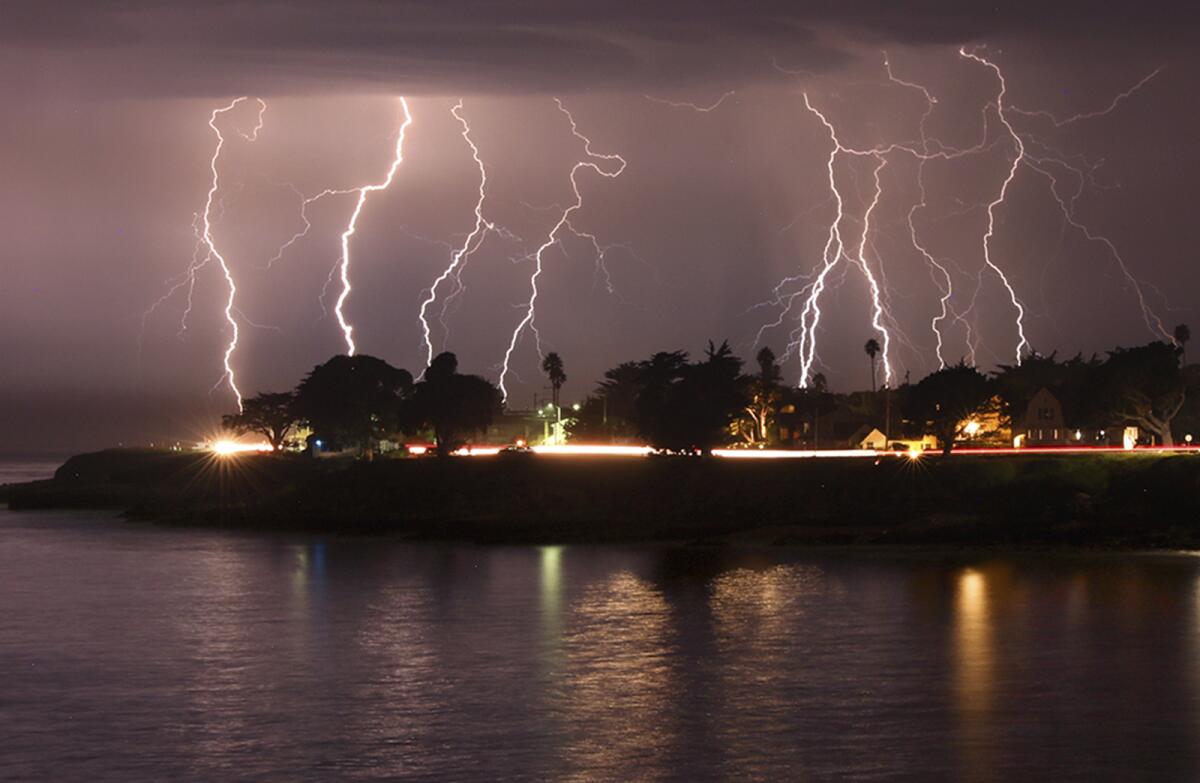Destructive Bay Area fires fueled by rare mix of intense dry lightning and extreme heat

- Share via
Many of the fires burning unchecked across the Bay Area and Northern California have been caused by lightning strikes and fueled by extremely hot weather.
By Wednesday, the rare weather events had caused thousands to flee as homes burned north of Vacaville. Fires were reported from the Santa Cruz Mountains to the wine country and beyond. Here is what we know about the causes:Three events combine for unusual, extreme weather
The recent weather events are the result of three distinct meteorological phenomena combining in a way rarely seen in California, experts told The Times earlier this week:
1) The heat wave broiling the West — longer and harsher than is typical for August — was the first to arrive. It is a high-pressure system rotating clockwise over California, Nevada and Arizona that steered hot, dry desert air over the Golden State, breaking heat records across the Central Valley.
2) Then Tropical Storm Elida off the coast of Mexico began feeding the heat wave moisture, which created instability in the atmosphere. This moisture is why so many of the wildfires burning in California recently have created towering pyrocumulus clouds, said UCLA climate scientist Daniel Swain.
3) A thunderstorm some 1,100 miles south of the Bay Area in Sonora, Mexico, sent an invisible rippling wave of uplifting pressure north through the atmosphere, where it mixed with the heat and moisture to produce hundreds of lightning strikes across hundreds of miles of the Bay Area on Saturday and Sunday. That created dozens of fires, while farther inland a tornado formed.
Lightning, then fire
Northern and Central California began experiencing an unusually active sequence of largely dry lightning strikes Sunday morning, likely the most widespread and violent in recent memory in the Bay Area on one of the hottest nights in years, according to Daniel Swain, a climate scientist with UCLA and the National Center for Atmospheric Research.
Most of the thunderstorms seemed mostly to be dry. And that, in combination with the high winds, makes these lightning storms especially dangerous, Swain tweeted Sunday. Peak gusts of up to 74 mph were reported in the Santa Cruz Mountains, and up to 70 mph in Marin County on Sunday morning.
At least 100 new fires began on Monday due to lightning, on top of others that began from the 1,500 or so lightning strikes that were spread across the Bay Area over the weekend, said Lucas Spelman, spokesman for the California Department of Forestry and Fire Protection.
Some of those lightning strikes may have created smoldering piles of timber and brush that are just waiting for enough sunlight and heat to turn into an active fire. without warning. An Angeles National Forest crew sent to Australia earlier this year had a similar fire spring back to life just recently.
“The brush is primed to burn; we know that there is huge potential there,” Spelman said.
More to Read
Sign up for Essential California
The most important California stories and recommendations in your inbox every morning.
You may occasionally receive promotional content from the Los Angeles Times.















